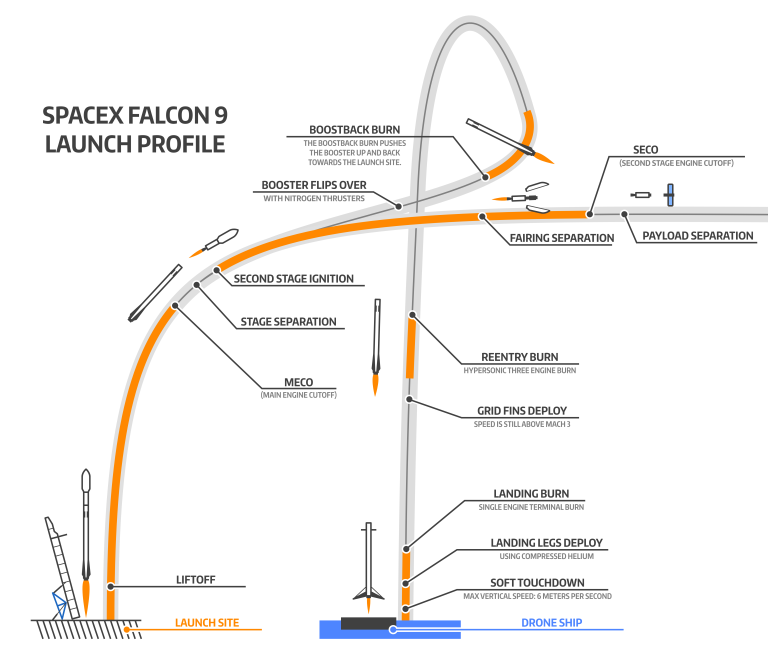You must have come across the rocket landing that has been all over social media for the past few days. SpaceX, Falcon 9, First Stage, etc. are some words you might have seen. If you don’t know what exactly is going on then I’m here to help you out and tell you more about what is nothing short of a historic event in the history of space travel.
The Falcon 9 is a 70m rocket that is capable of delivering satellites to Earth orbit or ferrying supplies to the International Space Station. Made by the private US company SpaceX, it has been in operation for several years now, recently completing its 20th launch. Wait, isn’t NASA the one that launches satellites in the US? Not anymore. The past decade has witnessed a slew of companies providing launch services, and one of them is SpaceX.
The thing about this particular company is that they are not just trying to get stuff into space, they’re also trying to land the rocket back at the launchpad so that it can be re-used. This is a massive task, as the vehicle is the height of a 9 storied building and weighs close to 30 tons, even without counting the fuel. To land this back on the launchpad is a monumental task. It’s like trying to balance a pencil on its tip after dropping it from the air. And guess what. They’ve pulled it off.
Forgive me, I lied to you up there. When I said they landed the rocket, they only landed the first stage of the rocket. The Falcon 9 is a 2 stage launch vehicle, meaning at one point in its flight path it splits into two parts and another engine propels the payload into orbit. This done because of physics, which shows that a staged rocket is more efficient than putting everything up there in one go. However, the first stage is most prominent part. It’s the long tall structure that has the main engines.
Well, so why do we need to re-use the first stage? It saves money. A LOT of money. Currently if you want to use the Falcon 9 to put something in space you’ve got to pay the premium price of 90 million US dollars. The hardware in the first stage makes up more that 50% of that price, so you could see why SpaceX wants to recover it. Continuous recovery of the rocket will drastically reduce the cost of space travel in the future. As Elon Musk, CEO of SpaceX said, the current way of using rockets is like buying a jumbo jet, flying it from Los Angeles to Melbourne, and the throwing it away. Re-usability is the future.
To land back at the launch site, the first stage performs a series of maneuvers. First, it rotated backwards and fires the engines, putting it on a path back home. This burn happens high up in space, over 120 kilometers in altitude. Next it fires once to slow down, and once more, just before landing. All this has to be programmed into the flight systems perfectly before launch. The fact that it has been performed successfully is a technological milestone. The diagram below is a schematic for previous attempts, in which they decided to land on a barge in the middle of the ocean since they couldn’t get clearance for a ground landing.

SpaceX’s long-term mission is to set up a permanent colony on Mars. As preposterous as that may sound, the incredible innovations that they are performing gives that the impression that we may live to witness the establishment of the first ever Martian colony. Be prepared witness an incredible era of space travel to come!

